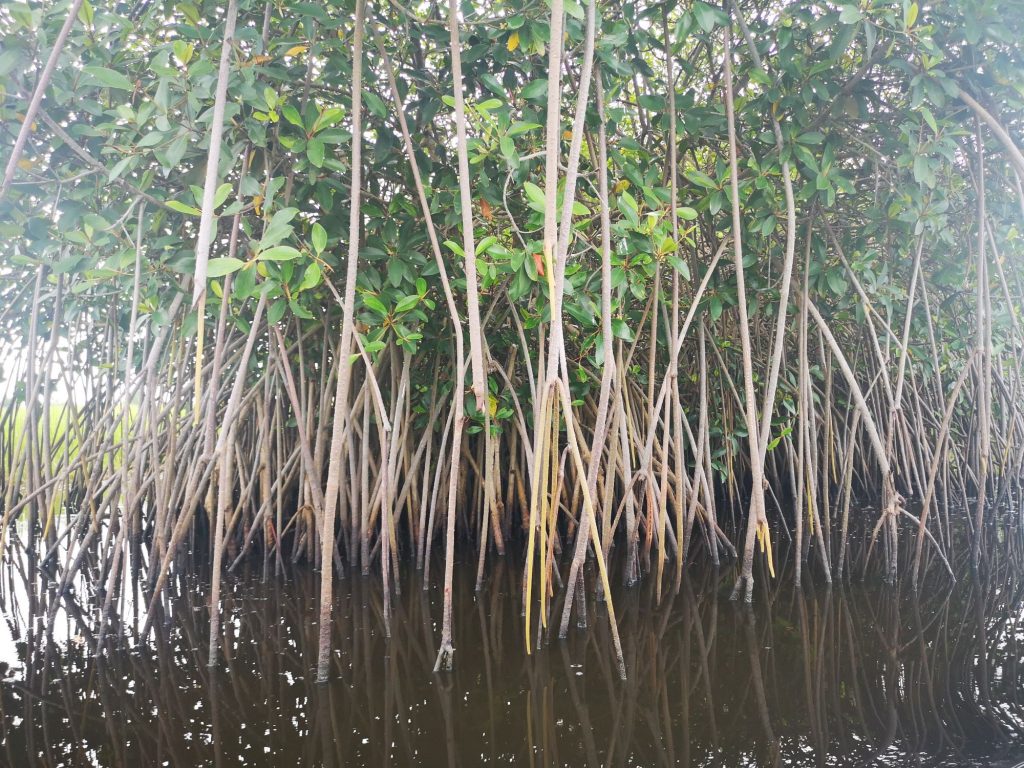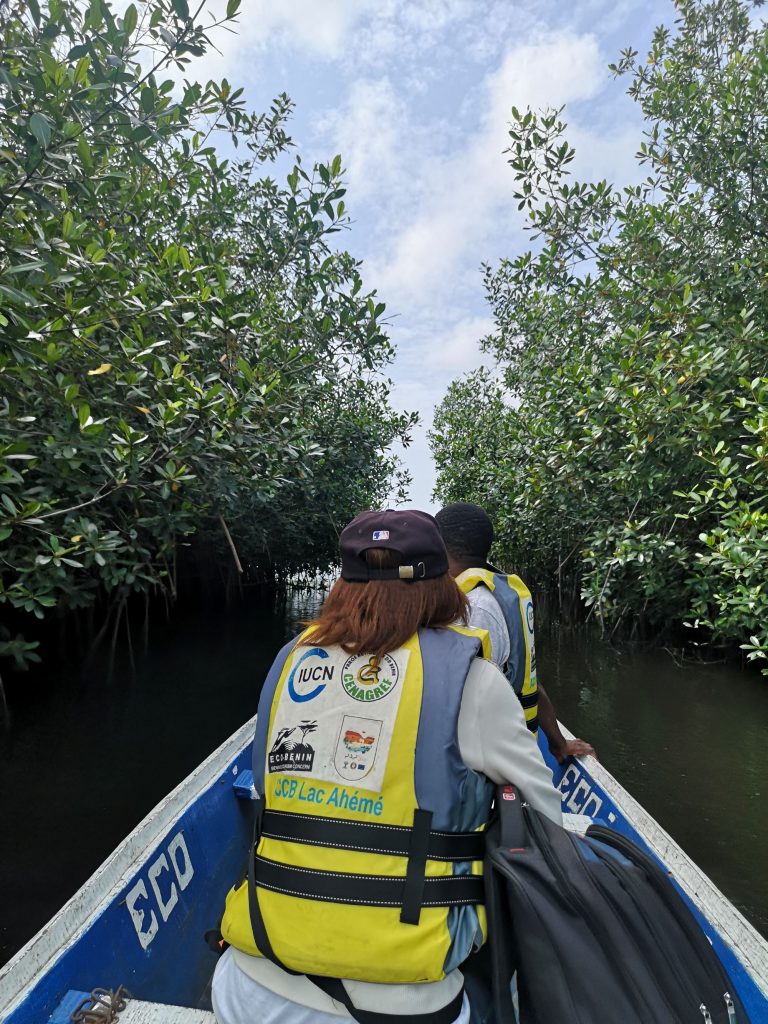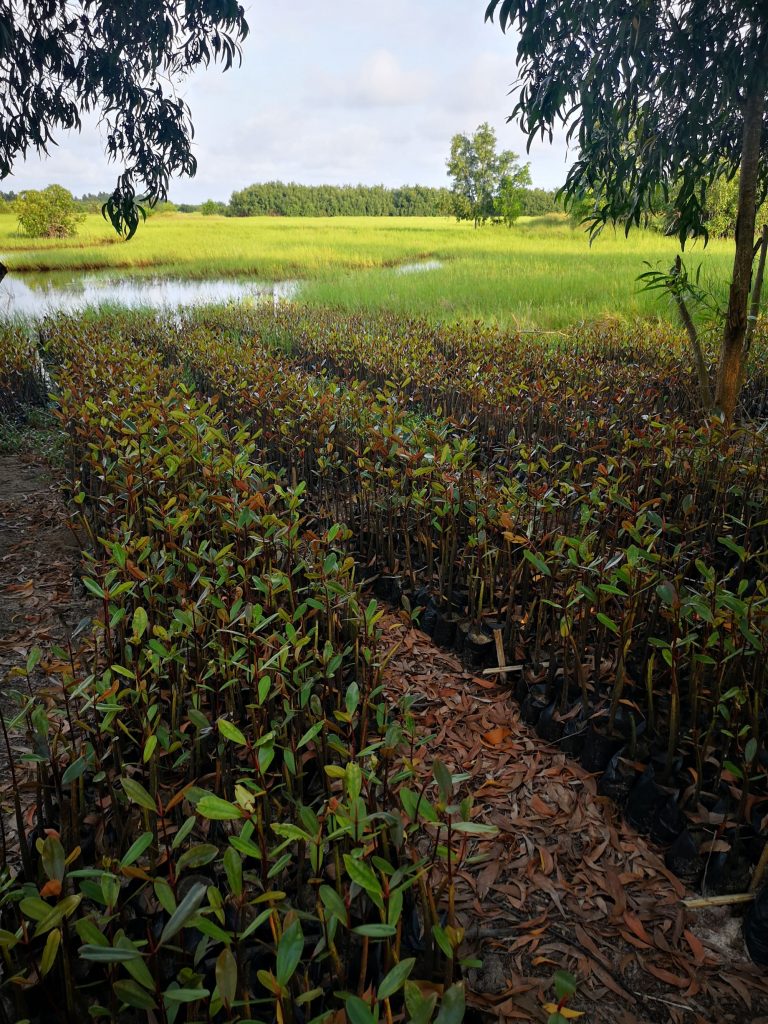Home » Mangroves, a fascinating ecosystem
Environment and biodiversity
Author: Stéphanie Gravel-Couture
What are mangroves?
Briefly, mangroves belong to the category of wetlands. They grow in swamps and in tidal zones. Therefore, they are very well adapted to salt water and they even have the capacity to desalinate water thanks to their roots and the pores of their leaves. They are mainly composed of mangroves, a woody tree that has stilt roots and is one of the only trees to survive in highly saline water. These roots help to capture oxygen at the surface and support the trunk above the ground or water. There are several types of mangroves: red, black, grey and white.

We find them mainly in the southern hemisphere, in the coasts of tropical and subtropical climates, between the 25th parallel north and south (Costa Rica, Benin, Madagascar, Indonesia). We also find this ecosystem in the United States, particularly in the Everglades National Park in Florida. Unfortunately, nearly 40% of these ecosystems have disappeared on a global scale. Moreover, it represents less than 1% of the world’s tropical forests, which makes it a very rare environment.
Why is this environment so important?
What economies are affecting the vitality of mangroves?
Several economic reasons lead to the deterioration of the mangroves of which:


How can we enjoy this magnificent environment while preserving it?
What is the connection between Village Monde and mangroves?
Since 2020, Village Monde is involved with several partners (Éco-Bénin, Université du Québec en Outaouais and CO2logic) in a project called “Mangroves Économie”. Moreover, this project is supported by the Quebec government within the framework of the international climate cooperation program (PCCI).
The objective is to improve the living conditions and resilience of the inhabitants of three riverside communities (Grand-Popo, Comé and Kpomassé), the largest mangrove area in Benin, by 2024. How will we achieve this? By developing a resilient local low-carbon economy with complementary income-generating activities that value and protect the mangroves in the south of the country.
In addition to restoring this precious ecosystem and protecting biodiversity, the project will allow:
We invite travelers using the VAOLO platform to offset their carbon emissions via our tool:
Subscribe to the travel newsletter from our collaborative booking platform Vaolo to find out what’s new, follow our explorers and receive tips for more conscious travel.
The use of the masculine gender has been adopted for ease of reading and has no discriminatory intent.
© 2025 All rights reserved. Village Monde.
By continuing to use the site, you agree to our privacy and cookie policy
I accept